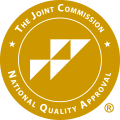Methamphetamines, most commonly known as meth or crystal meth, are illegal, highly potent central nervous system stimulants far more powerful than other common stimulants, such as cocaine or amphetamines.
More About Meth
Learn more about meth
Often found in a crystal-like powdered substitute, meth can be taken orally, snorted intranasally, smoked, or injected directly into a vein or muscle. Following meth use, a meth user experiences an intense, highly pleasurable rush which lasts a few moments. After the rush wears off, a meth user then experiences a state of extreme agitation that, in some people, leads to violent behaviors.
Meth is a highly addictive substance, and meth users quickly develop a tolerance, requiring larger amounts of the drug to get high. Sometimes, these tweakers ignore needs for food and sleep and binge on meth until they run out of the drug. Often, people combine methamphetamines, also known as “glass,” “crystal,” and “crank,” with other types of drugs, which is extremely dangerous. Combining methamphetamines with other stimulants, such as coke, can lead to cardiovascular collapse and death. Other people combine meth with central nervous system depressants such as alcohol or benzodiazepines in order to reduce some of the more unpleasant side effects of the drug. The combination of uppers and downers can lead to serious complications.
Statistics
Statistics on meth abuse & addiction
According to the 2012 National Survey on Drug Use and Health (NSDUH), approximately 1.2 million people (or 0.4% of the population) of the United States reported using methamphetamines in the past year; 440,000 (or 0.2%) reported past-month usage. In 2011, the Drug Abuse Warning Network (DAWN) reported that methamphetamines accounted for 103,000 visits to the emergency room. During these visits, meth was the fourth most commonly mentioned drug following cocaine, marijuana, and heroin.
What Causes Meth Use?
Learn about the causes and risk factors for meth addiction
Addiction is a disease of the brain that is not considered to be caused by a single factor. Rather, it is believed that addiction to meth and other drugs or alcohol is caused by a variety of environmental triggers, heredity, and physical changes in the brain working together. The most common causes and risk factors associated with meth addiction include:
Genetic: Addiction is often considered a hereditary disease. People who develop addiction to meth or other drugs often have a first-degree relative, such as a parent or sibling, who similarly struggles with addiction. However, many addicts do not have a family history of addiction.
Physical: It’s been suggested that certain people are born with a different structure and functioning of their brain and central nervous system, which can put them at a higher risk for developing an addiction to meth or other drugs.
Environmental: Those who are born into families in which addiction is a part of daily life may come to see drug abuse as the appropriate way to solve problems, and as a result develop an addiction later in life. Additionally, using drugs at an early age increases the risk that an individual will develop an addiction to drugs like meth.
Risk Factors: The more risk factors a person displays, the more likely they are to develop addiction to drugs like meth.
- Lack of parental supervision
- Early aggressive behaviors
- Peer substance abuse
- Availability of drug
- Low socioeconomic status
Protective Factors: The more protective factors a person has, the less likely they are to develop addiction to drugs or alcohol.
- Personality traits such as self-control
- Parental monitoring
- Academic and scholastic compliance and success
- Strong attachments to the community
Signs of Meth Addiction
Signs and symptoms of meth addiction
The symptoms of methamphetamine abuse will change from person to person based upon individual genetic makeup, abuse of other drugs or alcohol, frequency of use, amount used, and method of abuse. The most common symptoms of meth abuse include:
Behavioral symptoms:
- Withdrawing from previously enjoyed activities
- Lying to cover up meth usage
- Withdrawing from loved ones and friends
- Hiding stashes of meth around the house
- Poor work performance
- Legal problems
- Sudden need for money
- Stealing from loved ones
- Increased criminal activity
- Reckless behaviors
- Risk-taking behaviors
- Increased libido
- Unsafe sexual practices
- Increase in violent behavior
- Obsessive-compulsive behaviors
Physical symptoms:
- Meth mouth – or rotted teeth
- Brain damage
- Tachycardia
- Cardiac arrhythmias
- Increased respiration rate
- Hypertension
- Hyperthermia
- Decreased appetite
- Increased energy
- Decreased need for sleep
- Malnutrition
- Open sores
- Stroke
- Seizures
Cognitive symptoms:
- Increased ability to focus intently
- Jumping from one thought to the next without logical progression
- Clouded judgment
- Thinking very quickly
- Memory loss
- Difficulty concentrating on more than one thing at a time
Psychosocial symptoms:
- Euphoria
- Irritability
- Rush of pleasure
- Feelings of invincibility
- Depression
- Anxiety
- Mania
- Paranoia
- Worsening emotional health
- Worsening mental illnesses
- Hallucinations
- Meth-induced psychosis
- Suicidal thoughts and behaviors
Effects of Meth
The effects of meth addiction
The effects of chronic methamphetamine abuse will depend upon the length of time an individual has been abusing meth, the amount used, frequency of use, and individual genetic makeup. One thing is certain: chronic methamphetamine abuse causes significant damage to many individuals.
Common effects of meth abuse include:
- Addiction
- Tolerance
- Anhedonia – inability to feel pleasure
- Emaciation
- Loss of interpersonal relationships
- Financial ruin
- Joblessness
- Social isolation
- Mounting legal problems
- Incarceration
- Brain damage
- Meth mouth
- Anxiety
- Confusion
- Insomnia
- Mood disturbances
- Extremely violent behaviors
- Paranoia
- Hallucinations – visual and auditory
- Delusions – especially “meth bugs” crawling under the skin
- Psychotic tendencies
- Transmission of bloodborne illnesses such as HIV/AIDS and hepatitis B and C
- Suicide
Withdrawal & Overdose
Learn what happens during meth withdrawal & overdose
Methamphetamine overdose occurs when a person abuses a large, or more potent than expected, amount of methamphetamines. An overdose of methamphetamine will occur at differing amounts for each individual based upon sensitivity to the drug.
Effects of overdose from methamphetamines include:
- Profuse sweating
- Rapid respiration rate
- Tachycardia
- Dilated pupils
- Kidney failure
- Multiple organ system failure
- Confusion
- Delirium
- Hyperactivity
- Hyperthermia
- Intracerebral hemorrhage
- Heart attack
- Stroke
- Coma
- Death
The effects of withdrawal for a person addicted to methamphetamines vary wildly. Symptoms may last for days to weeks depending upon the length of meth use. It’s important that individuals who are attempting to detox from methamphetamines do so only under the supervision of trained medical personnel to avoid and manage any symptoms.
Effects of methamphetamine withdrawal may include:
- Strong drug cravings
- Irritability
- Headaches
- Agitation
- Restlessness
- Excessive sleeping
- Vivid dreams
- Depression
- Anxiety
- Fatigue
- Hunger
- Suicidal ideation and behaviors
Co-Occurring Disorders
Meth addiction and co-occurring disorders
Methamphetamine addiction often occurs with other types of mental disorders. The most common co-occurring mental illnesses include:
- Depressive disorders
- Schizophrenia
- Bipolar disorder
- Antisocial personality disorder
- Conduct disorders
- Alcoholism

















